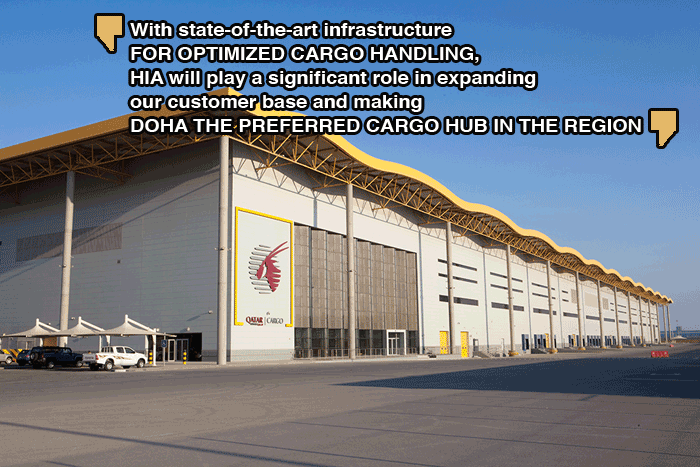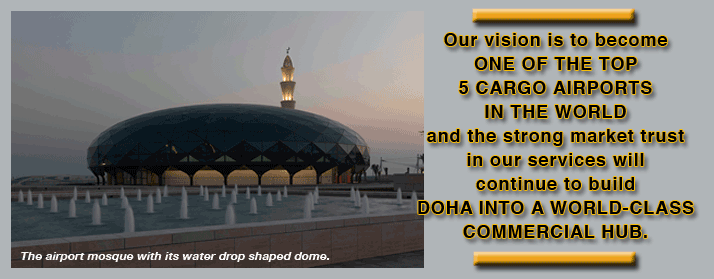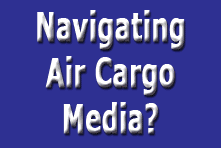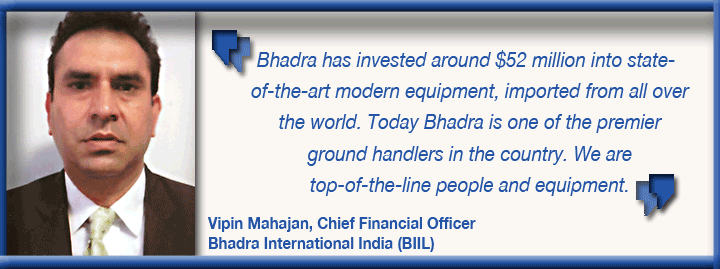
 ue
to host the FIFA World Cup in 2022, nobody can accuse Qatar’s rulers
of lacking ambition or imagination. Not only is this a huge global event
held in a country of just two million people—most of them expatriates—but
stifling summer temperatures will mean the building of vast air-conditioned
stadiums. Qatar’s willingness to aim for the heavens has long-been
apparent in the aviation sector. ue
to host the FIFA World Cup in 2022, nobody can accuse Qatar’s rulers
of lacking ambition or imagination. Not only is this a huge global event
held in a country of just two million people—most of them expatriates—but
stifling summer temperatures will mean the building of vast air-conditioned
stadiums. Qatar’s willingness to aim for the heavens has long-been
apparent in the aviation sector.
Qatar Airways has emerged over the last decade as a global player in both
cargo and passenger markets. Its rapid growth has been critical in transforming
Doha into a major global aviation hub, with the carrier’s volumes
providing the base cargo and passenger volumes all hubs need to attract
the third party carriers drawn to a critical mass of traffic.
Until now, Doha International Airport (DOH)
has taken the strain of Qatar’s success. But long-term plans to
boost national capacity are coming to fruition and freight is crucial
to the Qatari ‘Vision.’ Large chunks of DOH’s traffic
are due for gradual transferal to the $15.5 billion Hamad International
Airport (HIA), which is scheduled to open later this year and boasts state-of-the-art
facilities.
Hamad is located on a huge site some two-thirds
the size of the metropolitan Doha area. It includes its own monorail network
and is adjacent to both a residential area with room for 200,000 people
and the ‘Zone 1 Economic Zone,’ a key part of Qatar’s
long-term ‘Vision’ to boost non-energy revenue. Zone 1 covers
some four square kilometers, and when it is opened in 2016-17, is expected
to house high-value technology, manufacturing and pharmaceutical companies,
along with the logistics majors required to support their distribution
and warehousing.
 |
“HIA is the biggest investment thus
far in Qatar’s aviation history and this will propel the country
into becoming a major commercial hub,” said Abdulaziz Abdulla Al-Mass,
Manager Public Relations, Doha International Airport. “It will certainly
up the ante in the aviation sector, both regionally and globally. With
its enhanced capacity to handle large-scale international movements of
passengers, goods, workforce, knowledge, and technology, HIA will play
a significant role in fuelling economic diversification in Qatar and accelerate
its on-going development as a knowledge-based economy in line with Qatar
National Vision 2030.”
HIA’s cargo facility will offer the
ability to handle 5,000 shipments simultaneously at the 290,000-square
meter, USD$1 billion Qatar Airways Cargo Complex, which will have capacity
of 1.4 million tons per annum and be located in the midfield area of the
new airport.
“With state-of-the-art infrastructure
for optimized cargo handling, HIA will play a significant role in expanding
our customer base and making Doha the preferred cargo hub in the region,”
said Al-Mass.
The Complex composes seven facilities, including
one of the largest cargo terminal buildings in the world, spanning 55,000
square meters. It features an Air Cargo Handling System capable of accommodating
1,005 Unit Load Devices (ULD) and 5,286 consignment cages, plus 32 truck-loading
facilities on the landside area supported by full X-ray screening systems.
The new cargo terminal also includes a separate aircraft parking apron
with 11 wide-body aircraft stands, 42 airside loading docks, a live animal
center, plus dangerous and perishable goods storage areas.
“The Live Animal Centre, which is
4,200-square meters, contains dedicated holding, veterinary, and processing
areas for live animals shipped by air,” said Al-Mass. “A team
of specialist animal care personnel will be based at the facility to tend
to animals departing, arriving, or transiting through Doha.”
A state-of-the-art Cargo Warehouse Information
System (CWIS) will monitor the location of all cargo—whether stored
in the ULD System, consignment cages, or in the various special cargo
handling areas—while a Cargo Agents facility will provide leasable
space for more than 12 businesses. A Landside Security Station will feature
a special document processing area for cargo moving in and out of Qatar.
“HIA, as it continues to expand through
its various development phases until full completion in 2015, has been
designed to accommodate the growth that is expected both in the region
as well as in Qatar, thus making it the ideal commercial gateway for cargo
movement in the region,” said Al-Mass.
“Our vision is to become one of the
top 5 cargo airports in the world and the strong market trust in our services
will continue to build Doha into a world-class commercial hub.”
DOH saw growth of 15 percent in the year
through March 2013 when it handled 968, 499 tons. 14 percent growth is
forecast next year to take volumes to 1.14 million tons.
“As the demand for transportation
continues to grow in the region, and with Qatar increasingly becoming
an important commercial hub between east and west, we are continuously
growing our customer base,” he said. “At present, we have
31 customer airlines, 33 freight forwarders, and 3,624 commercial companies
as customers.”
Qatar Airways Cargo now serves more than
40 freighter destinations worldwide via its Doha hub with a fleet that
includes 5 Boeing 777Fs and 3 Airbus A330Fs. An additional 3 Airbus A330F
aircraft will be added within the next 12 months to help meet rising demand
and supplement the carrier’s substantial bellyhold capacity.
 |
Al-Mass believes Doha and the Middle East’s
other thriving and highly competitive aviation hubs are well placed to
continue expanding in the next decade.
“The Middle East is increasingly developing
as an important commercial and leisure travel hub,” he said. “It
is strategically located halfway between Asia and Europe. Two thirds of
the world’s population lives within 8 hours flight of Doha, for
example, with one third within four hours away. This gives the region
a significant strategic advantage by making it an ideal hub-and-spoke
gateway, with many airlines choosing to route all their traffic through
one central hub as it optimizes transportation efficiencies.
“As one of the fastest growing economies
in the world, Qatar is in a solid position to leverage this trend and
become a major international gateway. Modern, state-of-the-art infrastructure
is pivotal to achieving this objective.”
SkyKing |










 In
fact, so confusing is the situation that no less a personage as IATA
chief Tony Tyler, speaking at the India Aviation Day in March this year,
commented that the “policy disarray in ground handling”
in India denied airlines other than state-owned Air India the right
to perform ground operations for themselves.
In
fact, so confusing is the situation that no less a personage as IATA
chief Tony Tyler, speaking at the India Aviation Day in March this year,
commented that the “policy disarray in ground handling”
in India denied airlines other than state-owned Air India the right
to perform ground operations for themselves.  The
minister said that the new policy had been framed after the approval
from the Cabinet Committee on Security (CCS). Additionally, he said
the policy would bring economies of scale, ensure optimal utilization
of personnel and equipment, and ensure standardization.
The
minister said that the new policy had been framed after the approval
from the Cabinet Committee on Security (CCS). Additionally, he said
the policy would bring economies of scale, ensure optimal utilization
of personnel and equipment, and ensure standardization. 
